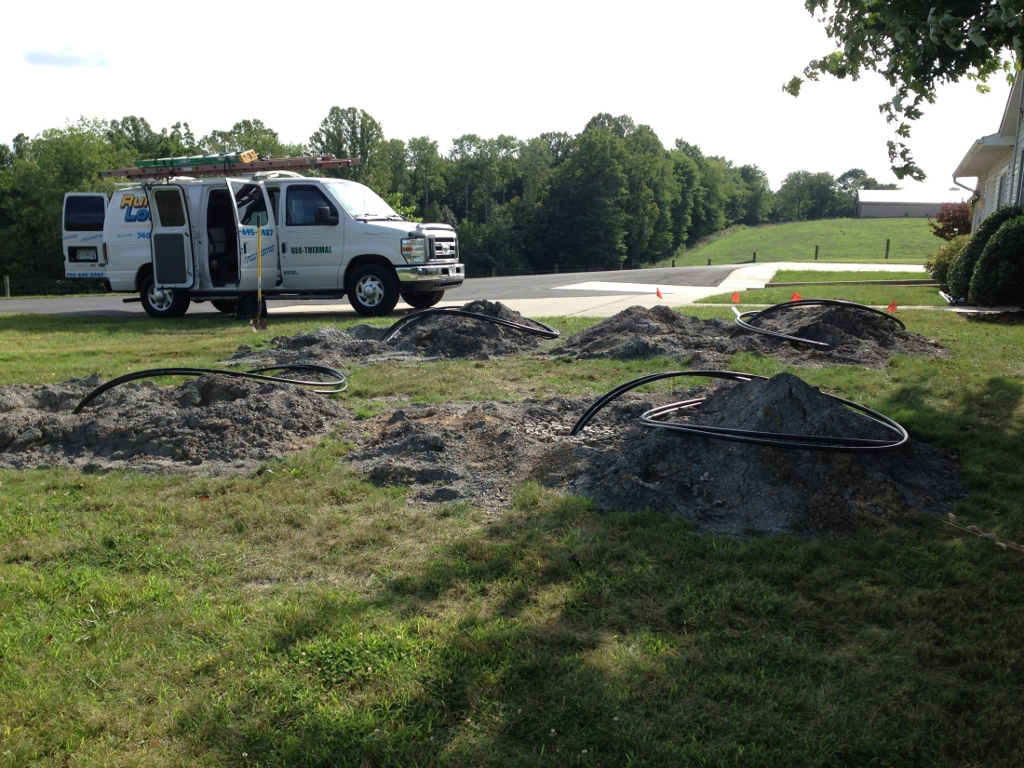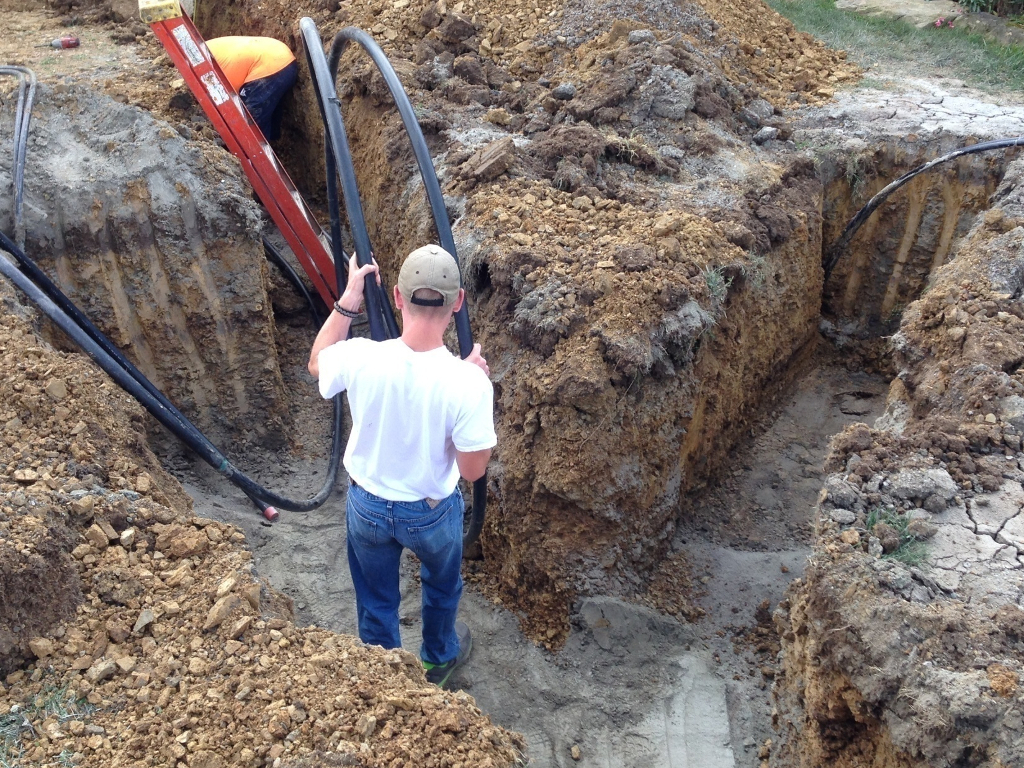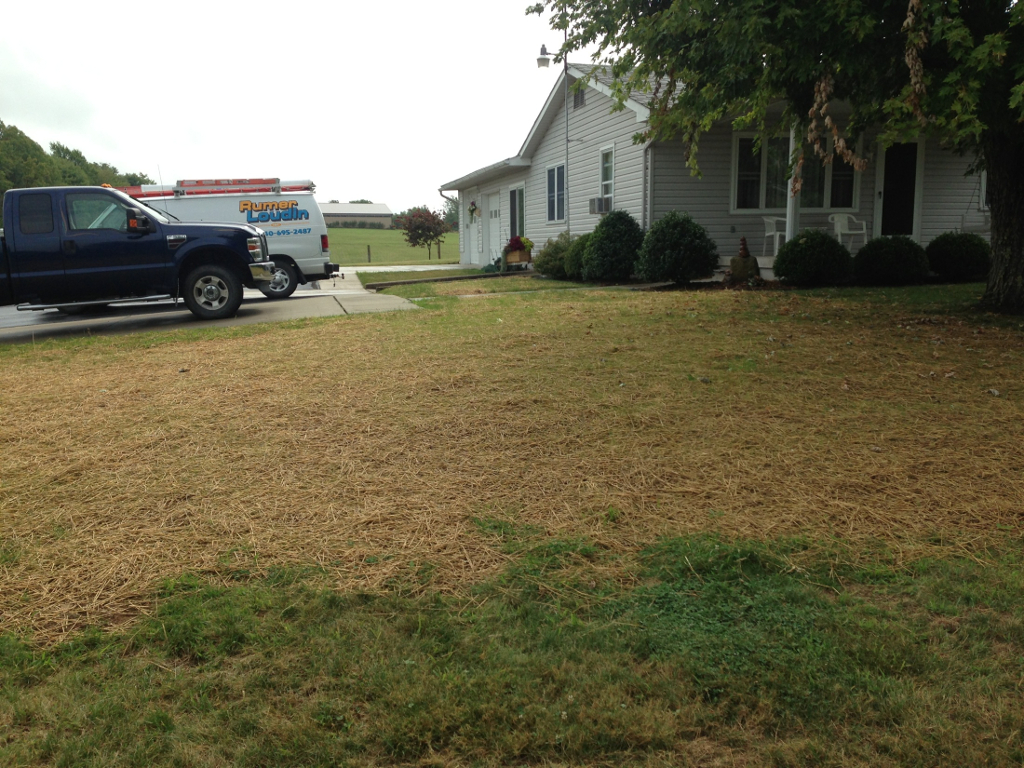Geothermal
Geothermal heat pumps are similar to regular heat pumps, except that they use the ground instead of outside air to provide heating and air conditioning. Because they use the earth’s natural heat, they are among the most efficient and comfortable heating and cooling technologies currently available.

Drilling for Vertical Loops

Loops After Installation

Trenches During Installation

Lawn After Installation

Pond Loop Installation

Pond Loop Trench

Winter Installation
For information on IRS tax incentives for installing a geothermal heat pump, please visit the latest Tax Credit and Incentives. Tax incentives for residential geothermal systems currently run through 2034.
Visit geoexchange.org to view the “What is Geoexchange?” video.
GeoExchange Systems: Fascinating Facts
The U.S. Environmental Protection Agency has identified geothermal heat pumps as a technology that significantly reduces greenhouse gas and other air emissions associated with heating, cooling and water heating residential buildings, while saving customers money, compared to conventional technologies. For every 100,000 units of typically sized residential geothermal heat pumps installed, more than 37.5 trillion BTU’s of energy used for space conditioning and water heating can be saved, corresponding to an emissions reduction of about 2.18 million metric tons of carbon equivalents, and cost savings to customers of about $750 million over the 20-year-life of the equipment.
GeoExchange Systems: Renewable and Ready
How GeoExchange works: GeoExchange systems use the Earth’s energy storage capability to heat and cool buildings, and to provide hot water. The Earth is a huge energy storage device that absorbs 47% of the sun’s energy – more that 500 times more energy than mankind needs every year – in the form of clean, renewable energy. GeoExchange takes this heat during the heating season at an efficiency approaching or exceeding 400% and returns it during the cooling season. GeoExchange heating and cooling systems use conventional vapor compression heat pumps to extract the low-grade solar energy from the Earth. In summer, the process reverses and the Earth becomes a heat sink.
Comparing Heating Systems
Central heating systems have been considered a necessity in our homes and businesses for many years. When comparing available systems, consumers should carefully consider safety, installation cost, operating costs, maintenance costs, and comfort.
Geothermal Reference List
Father Tom Chillog
St. Mary’s Church
60-ton drilled geothermal system
740-695-9993
Larry Koontz
5-ton drilled geothermal system
304-547-0836
St. Francis Cabrini
35-ton drilled geothermal system
740-633-9933
Dave Loretta
5-ton drilled geothermal system
740-296-5356
Dave McKeen
740-695-5021
6-ton drilled geothermal system
Mr. McKeen is also willing to allow interested clients to visit his property and inspect his system.
Mary & Eric Lyle
740-635-0970
3-ton drilled geothermal system
Gary Lehman
740-795-4343
David & Christine Crowell
740-458-9878
Don Schnegg
740-458-1614
John & Vonnie Hranko
740-926-1414

